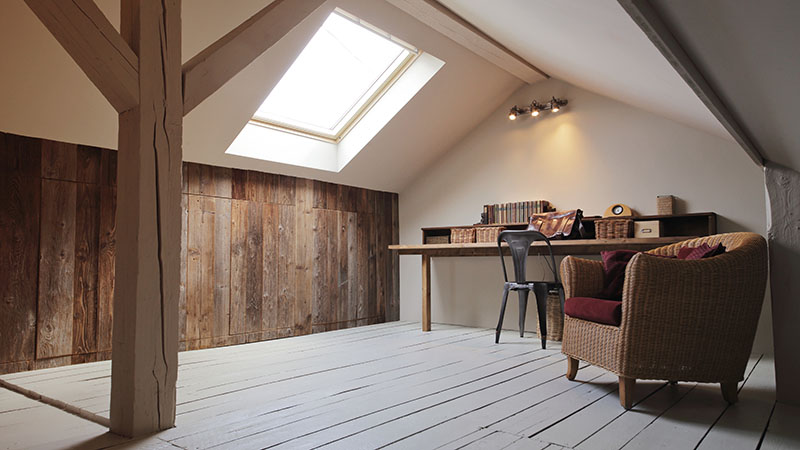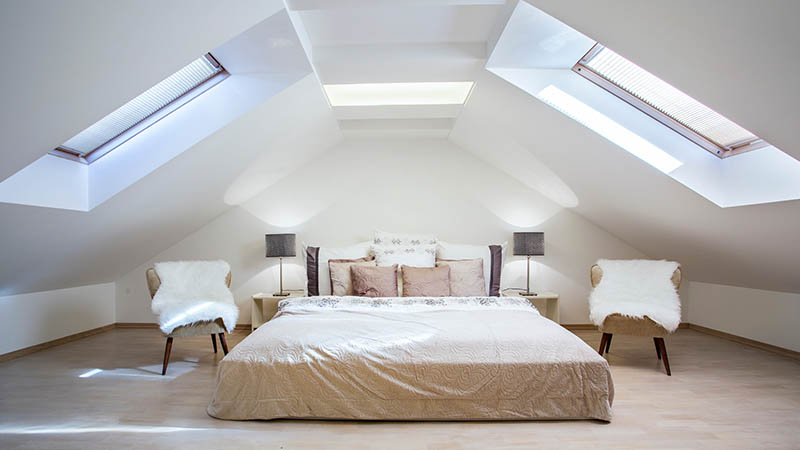Converting The Loft In Your New Build: What To Consider
Posted 18 November 2022 by
Keith OsborneCircumstances change all the time, and for lots of people, life can sometimes get unpredictable. Even if your new build home was just the right size for you when you moved in, it might be getting a bit small for your family now. Perhaps your family is expanding, or a new job means that you are spending more time at home working, and have realised that you don’t have as much space as you would like for a home office. Many people in new build homes want to know how they can create some additional space in the property. A loft conversion is a popular way to create more space in any property, but is it possible in a new build? The answer is not always that simple. There are lots of different factors to keep in mind when determining if your new build loft is suitable for a conversion. Here are some of the main ones to think about.
The roof joists
The structure of the roof itself is the most common issue that people face when looking to do a loft conversion in a new build home. Traditionally, roofs were constructed with thick-cut joists and fewer cross-sections to support more weight. However, over time, building materials and methods have evolved. Newer buildings are more likely to have roofs that are constructed with thinner joists and a W-shaped cross-section that has lots of cross-bracing to reinforce it. So even in a big loft, all of this can take up a lot of space and make it difficult or impossible to have a loft conversion.
You will also need to think about how supportive the joists themselves are. Typically, these joists would become the base for the floorboards in a loft conversion, but if they are thinner, they may not be strong enough to support the kind of weight that a loft conversion would add.
Making changes
Depending on how and where you bought your new build home from, it might not be possible for you to make any changes. In many cases, you can’t even decorate in a new build home for the first year or so, let alone have a loft conversion. If your home is still under warranty, then you will also need to think of the implications of adding a loft conversion on your warranty and whether it would be voided as a result. It is definitely worth getting some expert support on this matter before you go ahead with the loft conversion.
 Fire safety
Fire safety
Even if your new build is fine to have a loft conversion built, there is the issue of fire safety to consider. Windows and doors will need to be added to all loft conversions to meet fire regulations and to provide ventilation to the space. All pitched roof windows will need to be fitted by a professional who understands new builds and is working with architects, installers, merchants and homeowners to ensure that you get the best result from the project. You will also need to have a dedicated staircase or an extension of your regular staircase leading to the loft, along with a door into the loft room. Find door options at Online Door Store.
Ownership
A tricky one to consider when you are thinking about getting a loft conversion done in your new build property is whether or not you actually own it. Just because the loft space is a part of your home and you have bought the property either outright or with a mortgage, it might be surprising to hear that it’s not yours to do anything that you like with. Today, a large number of new build properties including both houses and flats, come under the leasehold category. While leaseholds can be confusing, it basically means that while the property is personally considered to be yours, the land and therefore the home that resides on it is owned by another party. So, before you go ahead with a loft conversion in your new build, it’s worth double-checking that you actually have the rights to make big alterations like this on your home. This may also be the case if you purchased your new build property through a Shared Ownership scheme, especially if so far you have only purchased a percentage of the property.
Measuring the loft
If you can go ahead and make changes like a loft conversion in your new build, then the next most important thing to do is ensure that it’s got the correct measurements. Before you can get started on the project, you should make sure that the loft has the correct amount of height for a conversion. If there isn’t enough height to meet the legal requirements, then it might end up being too complicated or costly to get around and get the additional space in your loft.
If you can easily access your loft, then all you need is a tape measure to get the measurements for the space. You can also ask a professional to come and do this for you if you do not feel comfortable doing it yourself. You should measure the distance between the underside of the ridge beam, or the highest beam at the tip of the roof, and the floor joists. For a loft conversion to work, this should be at least 2.4m, so you are left with 2.2m of head space after the loft conversion.
 Type of loft conversion
Type of loft conversion
Choosing the right type of loft conversion for your new build is another tricky topic. There are several options that you can go for. A simple roof light conversion is a great idea if you want to do it on a budget and your loft has enough room. On the other hand, if you want to add a serious amount of additional space to your loft, then you may consider a bigger loft conversion like a dormer or hip-to-gable. This is only usually possible on detached or semi-detached properties, although it may be possible if you live in an end terraced new build property. Both of these involve using the roof to create additional space by building onto the back, side, or both of the roof. It’s ideal if you want to use your loft space for more than simply storage or a small home office, and are planning to turn it into a larger room such as a master bedroom with an en-suite.
Final considerations
Before you go ahead and start planning your new build loft conversion, there are a few final considerations to make. Whether or not you are going to need planning permission is one of the major ones. For the most part, loft conversions come under permitted development for new builds and other homes. However, there are some rules to stick to including where to put windows and making sure that you only use materials that are similar, or the same, as those used for the rest of the home. If you live in a semi-detached or terraced property, then you may need to get a party-wall agreement signed by your adjoining neighbour or neighbours before you can start work too.
If you have a new build property and want to make it more spacious, you may have considered a loft conversion. But before you start, it’s important to consider loft conversions for new builds, and make sure that your home is suitable.